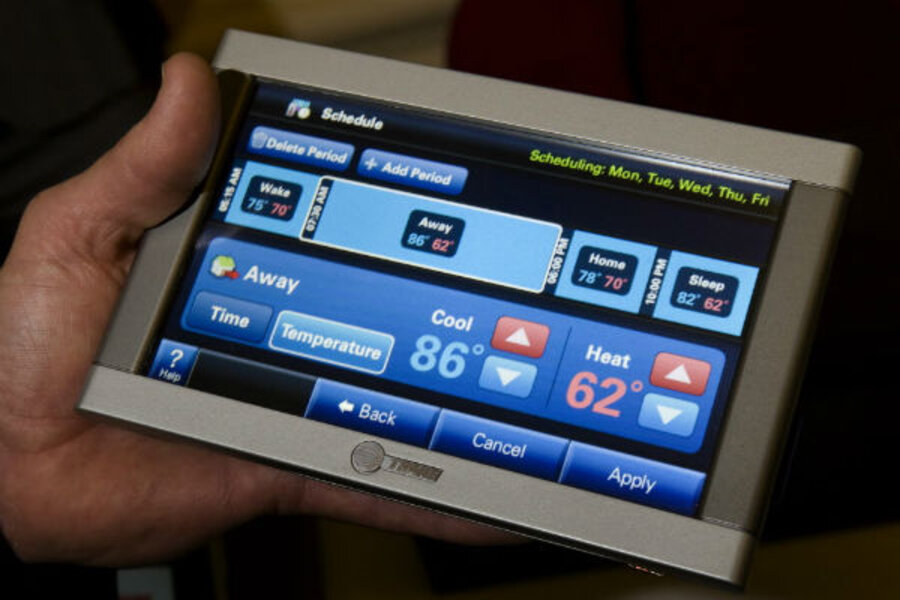Properly used, a programmable thermostat cuts energy costs
Loading...
During the day at our house, I leave the air conditioning and furnace off, no matter the time of year. I’m pretty comfortable with a wide temperature range.
However, my wife and kids prefer a somewhat more narrow range in temperatures, so it makes sense to turn on the air conditioning (in the hot months) or the furnace (in the cold months) an hour or so before the family comes home.
Doing this saves us some money. The air conditioning/furnace doesn’t spend all day kicking on and off maintaining a temperature. Instead, it just works for a short period adjusting the temperature to what my family likes.
The problem with this strategy is that it requires me to adjust the thermostat twice a day. If I don’t adjust it in the morning, it stays on all day, kicking on and off and costing us money.
If I remember the morning adjustment but don’t adjust it in the afternoon, the house might be sweltering or freezing when the rest of the family comes home – and that means unhappiness.
Forgetting a single thermostat adjustment also meant a big waste of money. I calculated that not turning off the thermostat in the morning would cost us about $8 for that day without any real benefit.
Our solution to this problem has been a programmable thermostat. We have a weekday cycle that includes an appropriate evening temperature, an appropriate nighttime temperature, and a complete absence of air conditioning or heat during the daytime hours.
It is extremely hard to calculate exactly how much money this saves, but our energy use when comparing the same month to a year prior dropped about 10% after installing the programmable thermostat. That amounted to a roughly 7% drop in our energy bill.
Considering that our programmable thermostat cost us only about $20, it only took a handful of months for the programmable thermostat to pay for itself. In the years since we installed it, we’ve paid for the unit several times over. It just slowly saves us money on each and every energy bill.
Installing a thermostat is really straightforward. It took me about fifteen minutes and only required a screwdriver. I just flipped a breaker, removed the old one (requiring unscrewing a few screws), installed the new one (requiring unplugging two cables from the old one, plugging them into the new one, then screwing in a few screws), and flipped the breaker back on.
It’s really important to note that a programmable thermostat won’t help in some situations. If you rarely use air conditioning or the furnace, a programmable thermostat won’t help at all. If you just keep your home at a steady temperature all the time, a programmable thermostat won’t help.
However, if you regularly adjust the temperature in your home, particularly in a clear pattern, a programmable thermostat (used properly) can really save you money.






